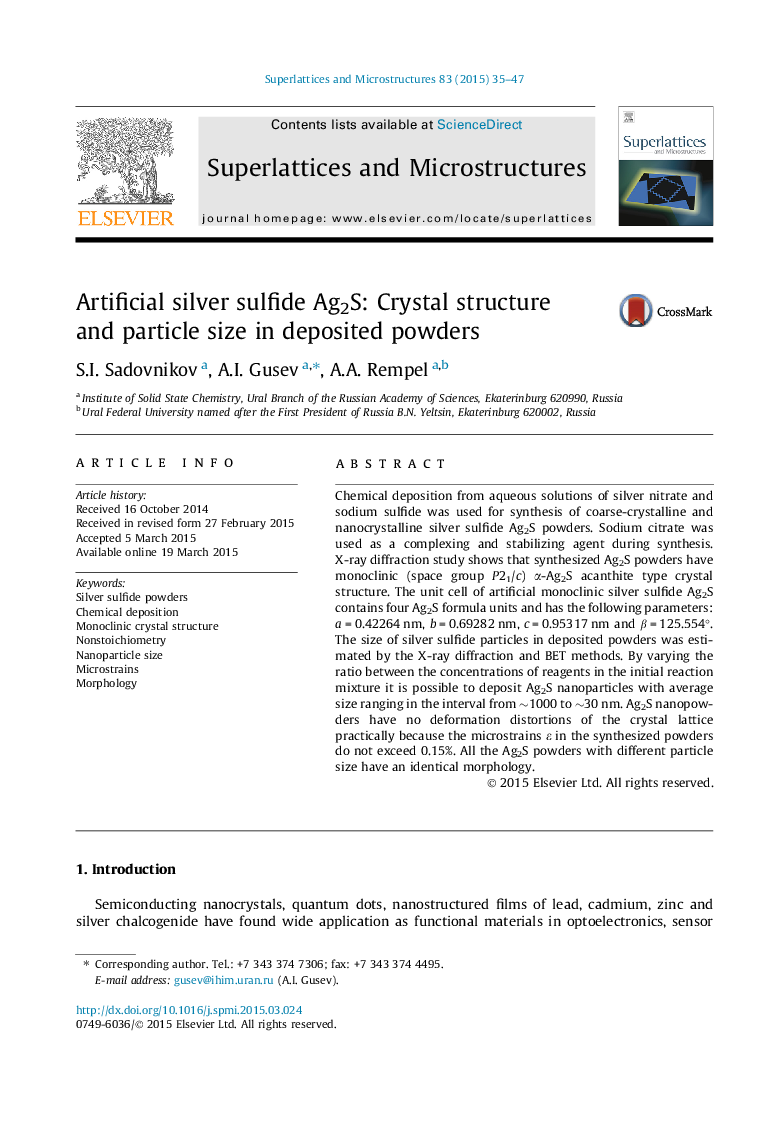| Article ID | Journal | Published Year | Pages | File Type |
|---|---|---|---|---|
| 1553104 | Superlattices and Microstructures | 2015 | 13 Pages |
•Ag2S powders are synthesized by chemical deposition from aqueous solutions.•Initial reaction mixture contains silver nitrate, sodium sulfide, and sodium citrate.•Reagent content variation allows to deposit Ag2S with various average particle size.•Ag2S powders with average particle size from 500 to 30 nm have identical morphology.•Synthesized Ag2S powders have monoclinic α-Ag2S acanthite type crystal structure.
Chemical deposition from aqueous solutions of silver nitrate and sodium sulfide was used for synthesis of coarse-crystalline and nanocrystalline silver sulfide Ag2S powders. Sodium citrate was used as a complexing and stabilizing agent during synthesis. X-ray diffraction study shows that synthesized Ag2S powders have monoclinic (space group P21/c) α-Ag2S acanthite type crystal structure. The unit cell of artificial monoclinic silver sulfide Ag2S contains four Ag2S formula units and has the following parameters: a = 0.42264 nm, b = 0.69282 nm, c = 0.95317 nm and β = 125.554°. The size of silver sulfide particles in deposited powders was estimated by the X-ray diffraction and BET methods. By varying the ratio between the concentrations of reagents in the initial reaction mixture it is possible to deposit Ag2S nanoparticles with average size ranging in the interval from ∼1000 to ∼30 nm. Ag2S nanopowders have no deformation distortions of the crystal lattice practically because the microstrains ε in the synthesized powders do not exceed 0.15%. All the Ag2S powders with different particle size have an identical morphology.
Graphical abstractFigure optionsDownload full-size imageDownload as PowerPoint slide
